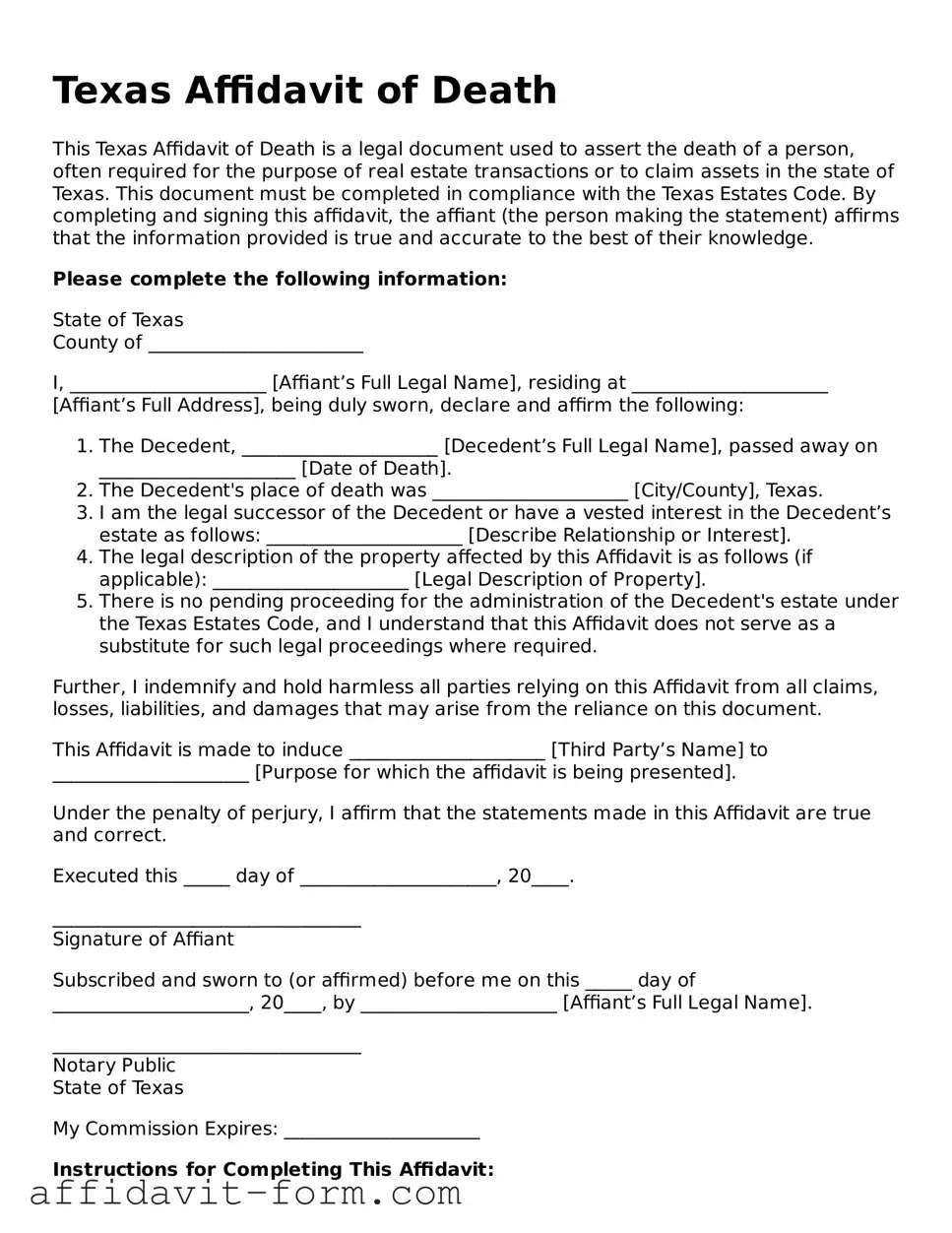Texas Affidavit of Death
This Texas Affidavit of Death is a legal document used to assert the death of a person, often required for the purpose of real estate transactions or to claim assets in the state of Texas. This document must be completed in compliance with the Texas Estates Code. By completing and signing this affidavit, the affiant (the person making the statement) affirms that the information provided is true and accurate to the best of their knowledge.
Please complete the following information:
State of Texas
County of _______________________
I, _____________________ [Affiant’s Full Legal Name], residing at _____________________ [Affiant’s Full Address], being duly sworn, declare and affirm the following:
- The Decedent, _____________________ [Decedent’s Full Legal Name], passed away on _____________________ [Date of Death].
- The Decedent's place of death was _____________________ [City/County], Texas.
- I am the legal successor of the Decedent or have a vested interest in the Decedent’s estate as follows: _____________________ [Describe Relationship or Interest].
- The legal description of the property affected by this Affidavit is as follows (if applicable): _____________________ [Legal Description of Property].
- There is no pending proceeding for the administration of the Decedent's estate under the Texas Estates Code, and I understand that this Affidavit does not serve as a substitute for such legal proceedings where required.
Further, I indemnify and hold harmless all parties relying on this Affidavit from all claims, losses, liabilities, and damages that may arise from the reliance on this document.
This Affidavit is made to induce _____________________ [Third Party’s Name] to _____________________ [Purpose for which the affidavit is being presented].
Under the penalty of perjury, I affirm that the statements made in this Affidavit are true and correct.
Executed this _____ day of _____________________, 20____.
_________________________________
Signature of Affiant
Subscribed and sworn to (or affirmed) before me on this _____ day of _____________________, 20____, by _____________________ [Affiant’s Full Legal Name].
_________________________________
Notary Public
State of Texas
My Commission Expires: _____________________
Instructions for Completing This Affidavit:
- Ensure all blanks are filled with accurate information.
- Verify that all information accurately reflects the death and related matters as they pertain to Texas law.
- Consult with a legal professional if you have any questions about completing or using this affidavit.
